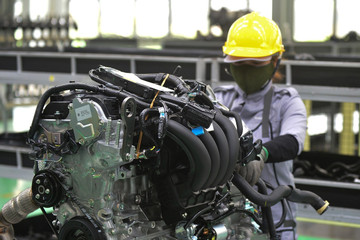- © Copyright of Vietnamnet Global.
- Tel: 024 3772 7988 Fax: (024) 37722734
- Email: evnn@vietnamnet.vn
vietnam economy
Update news vietnam economy
Which fields have seen the most businesses leaving the market?
The number of businesses leaving the market has increased more rapidly than the number of businesses joining and rejoining the market, according to the Ministry of Planning and Investment (MPI).
Vietnam becomes attractive colocation markets for foreign investors
Vietnam ranked seventh among the top 10 emerging colocation markets globally with a market size estimated to hit 1.5 billion USD by 2026, according to a recent report by KPMG published earlier this month.
Vietnam among 21 richest countries in Asia
Vietnam ranked 16th among the tip 21 richest countries throughout Asia, as compiled by Insider Monkey, a finance website focusing on financial markets, hedge funds, and insider trading.
Vietnam’s exports to hit US$618 billion by 2030 at 7 per cent annual growth
Vietnam will be a key driver of global trade growth, with its exports projected to reach US$618 billion by 2030, an annual growth rate of 7 per cent, outpacing the global average of 5 per cent by a significant 2 percentage points.
The monetary policy and liquidity of the economy
Enterprises want to have a flexible effective monetary policy and to see their demand for capital satisfied. Ensuring liquidity is one of the most important duties of the policy.
NA deputies propose solutions to support enterprises
During discussions about socio-economic development yesterday morning, National Assembly (NA) deputies agreed that the State and the society should closely support the enterprise community.
Vietnam’s exports of goods to hit US$618 bln by 2030: Standard Chartered
Vietnam’s exports of goods could reach US$618 billion by 2030, with the average annual growth rate of 7 percent in the 2021-2030 period.
VN 5-month retail sales of consumer goods, services highest in eight years
Total revenue from retail sales of consumer goods and services was estimated at VND519 trillion (US$22.09 billion) last month.
Unable to access bank loans, businesses struggle to develop
About 80 percent of surveyed businesses say the biggest obstacle to borrowing money from banks is the lack of collateral.
Will interest rate cuts, debt restructuring and tax cuts foster economic growth?
Agencies have recently launched fiscal and monetary policies expected to serve as a strong push to help the economy escape the risk of growth decline.
Vietnam’s services sector remains a bright spot: HSBC
Vietnam’s services sector remains a bright spot, partially offsetting some external weakness, according to a report released by HSBC Vietnam on May 31.
Vietnam projected to become 20th largest global economy
Vietnam, a rising economic powerhouse in Southeast Asia, is set to witness remarkable growth over the coming years.
Retail sales of consumer goods, services top $22 billion in May
Total revenue from retail sales of consumer goods and services in May was estimated at 519 trillion VND (22.09 billion USD), an increase of 1.5% over the previous month and 11.5% year on year thanks to the long holidays in the beginning of the month.
Biting the bullet
Flagging demand has compelled manufacturers to reduce their production and workforce.
Firms hesitate to access loans due to weak consumption demand
The State Bank of Vietnam last week cut its policy rates for the third time this year to prop up economic growth.
Home market a cushion against trade downturn
Vietnam is witnessing a slowdown in trade as the global economy is edging closer to a recession.
VN businesses fret over worsening hardships by year-end
Vietnamese enterprises are facing extreme hardships, according to a report sent to the prime minister by the National Private Economic Development Research Board.
Local enterprises face tough times, survey reveals
Local enterprises were going through a particularly difficult situation, a survey conducted by the National Private Economic Development Research Board under the Government’s Advisory Council for Administrative Procedure Reform has revealed.
Vietnam shows significant improvement in business environment: EIU
Vietnam jumped 12 places in the Economist Intelligence Unit (EIU)’s latest business environment rankings which measure the attractiveness of doing business in 82 countries with 91 crucial indicators.
Minister warns about policies holding back economic progress
At important events, Minister of Planning and Investment Nguyen Chi Dung always stresses that new policies and regulations that require people and businesses to spend more, create new procedures, and require more time must not be issued.



















